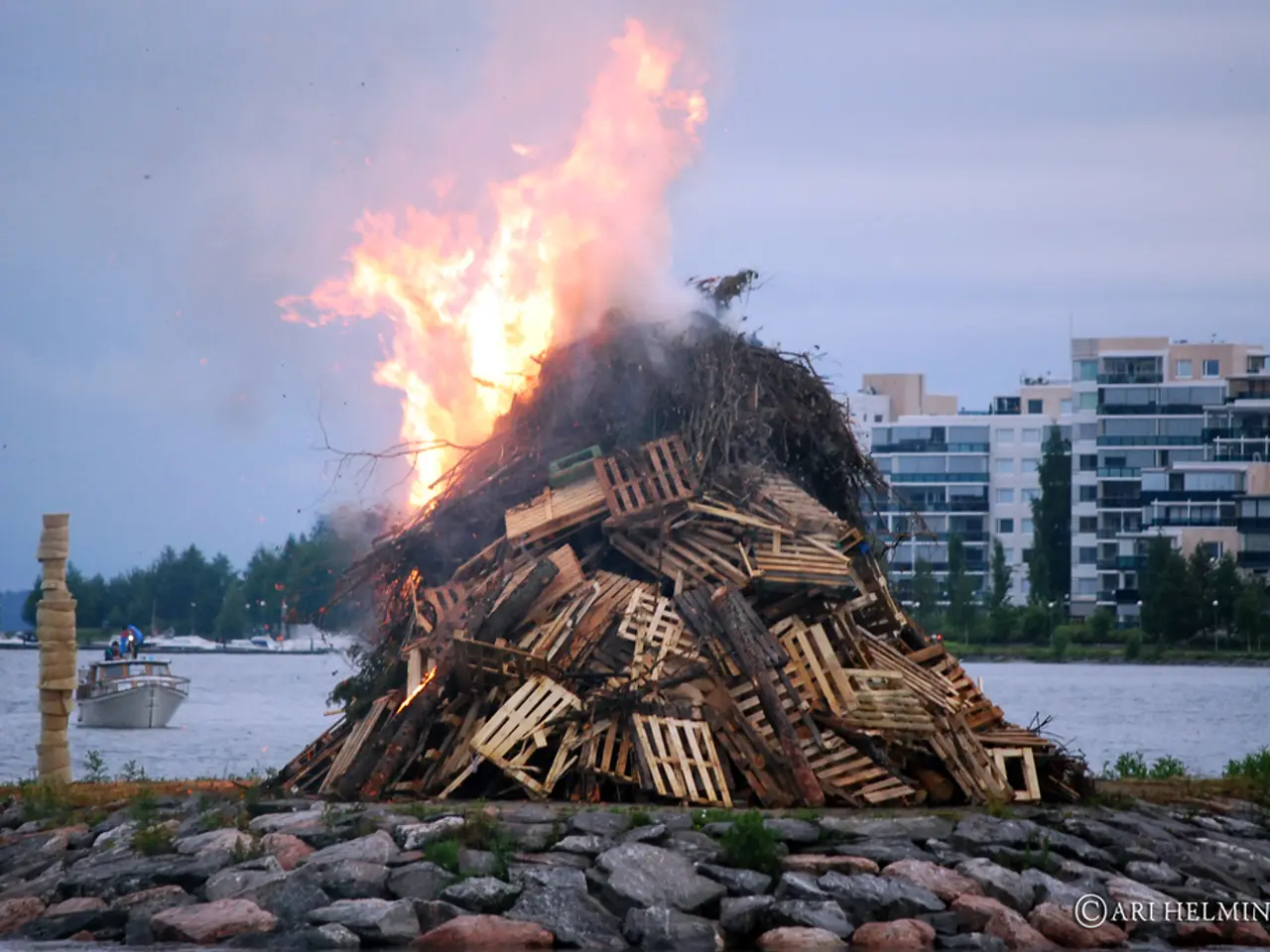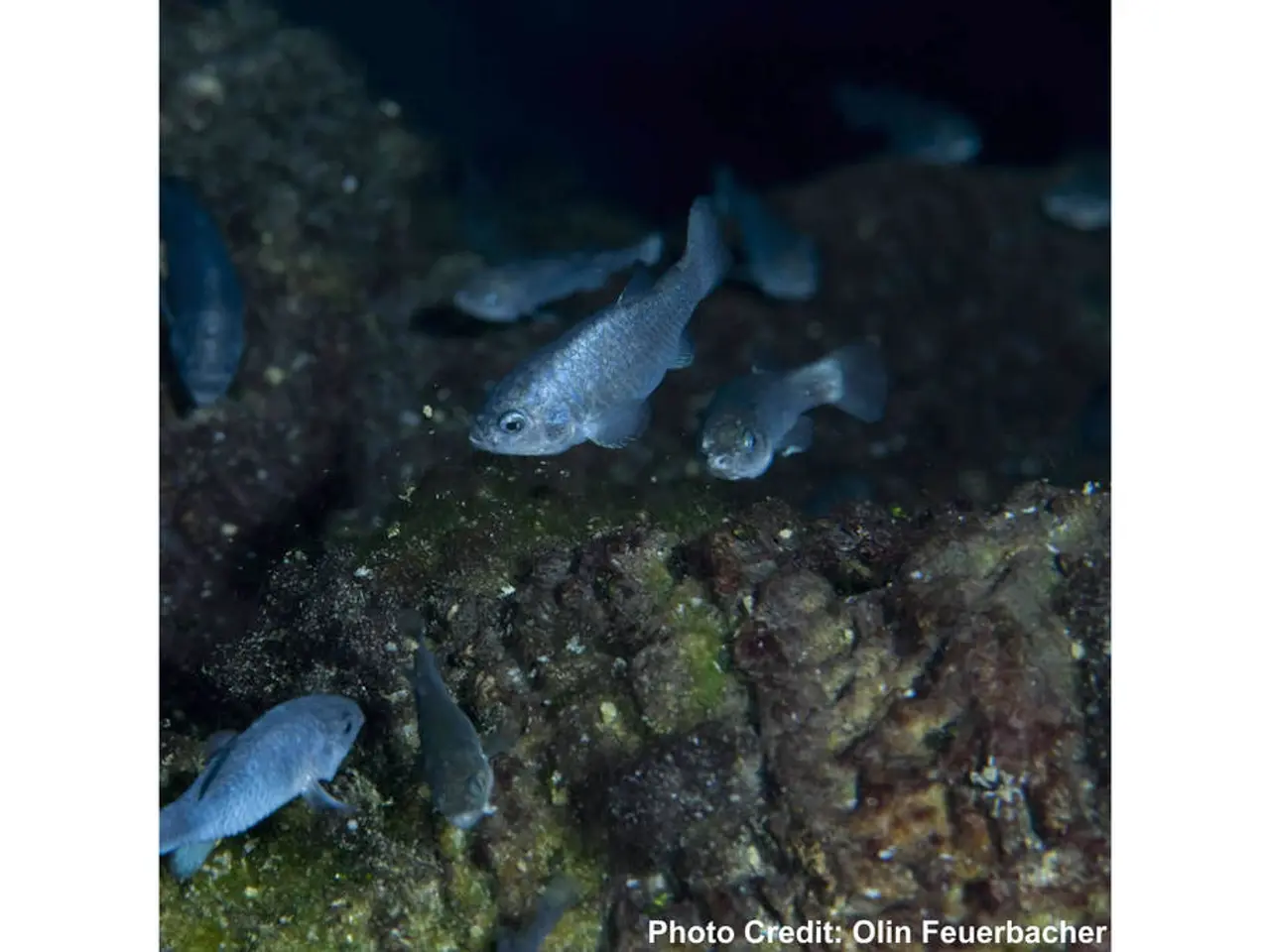Groundwater Levels: Remarkably Improved Compared to 2022, Yet Challenges Foreseen in Pyrenees-Orientales and Aude Regions
In the picturesque territories of viticulture, arboriculture, and summer tourism, such as Pyrenees-Orientales and Aude, the outlook for the coming months remains grim, with forecasts predicting a continued depletion of aquifers unless significant rainfall occurs [1][2].
The Roussillon plain is currently experiencing a very critical and pessimistic groundwater situation, following the second heat wave of the summer in August 2025. Groundwater levels there have reached some of their lowest on record, with projections suggesting that the depletion will likely continue throughout the summer [1][2].
Elsewhere in France, the picture is more varied. Aquifers in the Paris Basin and East Lyonnais are currently in a favorable state, with levels above normal, while groundwater levels in other northern and central French reactive aquifers are expected to remain low or continue declining, albeit with some uncertainties [1]. Southern areas, excluding Pyrénées-Orientales and Aude, may see somewhat more optimistic groundwater conditions, but the Pyrénées-Orientales region, where Roussillon is located, remains under stress [1].
For the Roussillon area near Perpignan, despite almost normal rainfall recently, groundwater levels remain critically low according to local water supply authorities, reflecting ongoing stress on resources intensified by high withdrawals and summer heat [3].
The ongoing heat waves contribute to this negative trend, despite some recent rains. During thunderstorms, rainwater runs off more, vegetation absorbs all the humidity, and heat increases the demand for water.
Violaine Bault, a hydrogeologist at the national geological service, warns of certain difficulties in the Pyrenees-Orientales and Aude. She notes that very little water infiltrates deeply due to these conditions [3].
The Bureau of Geological and Mining Research (BRGM) has noted this in its new situation report. The Armorican Massif, the Aquitaine basin, the Rhone-Saône corridor, the Mediterranean coast, and Corsica, where forecasts are uncertain, must remain vigilant.
In Roussillon, 44% of observation points are below monthly norms, 24% are comparable, and 32% are above these norms. Levels on the aquifers of the Aude valley, the Corbieres Massif, and the Roussillon plain remain low to very low. Last July, the groundwater situation was more favorable, with 70% of levels above monthly norms [1].
Artois, the Center, and the eastern border of the Paris basin could also be concerned. The overall groundwater situation in France is heterogeneous. The inertial aquifers have deteriorated in July, and the groundwater situation continues to deteriorate slightly compared to the previous month [1].
The second heat wave of the summer could quickly amplify pressure on underground reserves. Most underground reserves have decreased by 88% compared to early July. July's rains have generated recharge of the most reactive aquifers, notably Corbieres, and have allowed a reduction in withdrawals [1].
Despite these challenges, it's important to note that groundwater levels are higher than those of 2022 and 2023, years marked by drought [1]. As the summer progresses, it's crucial for authorities and residents to remain vigilant and conserve water where possible to mitigate the impact on these vital resources.
In the beleaguered Roussillon region, the ongoing climate-change-induced heat waves and depleted water resources have led to a critical state in environmental-science terms, specifically affecting groundwater levels, due to reduced infiltration and increased demand [1][2][3]. The dire weather conditions have also raised concerns for future precipitation, as the continued depletion of the aquifers could have significant implications for the region's agriculture, tourism, and environmental sustainability.








